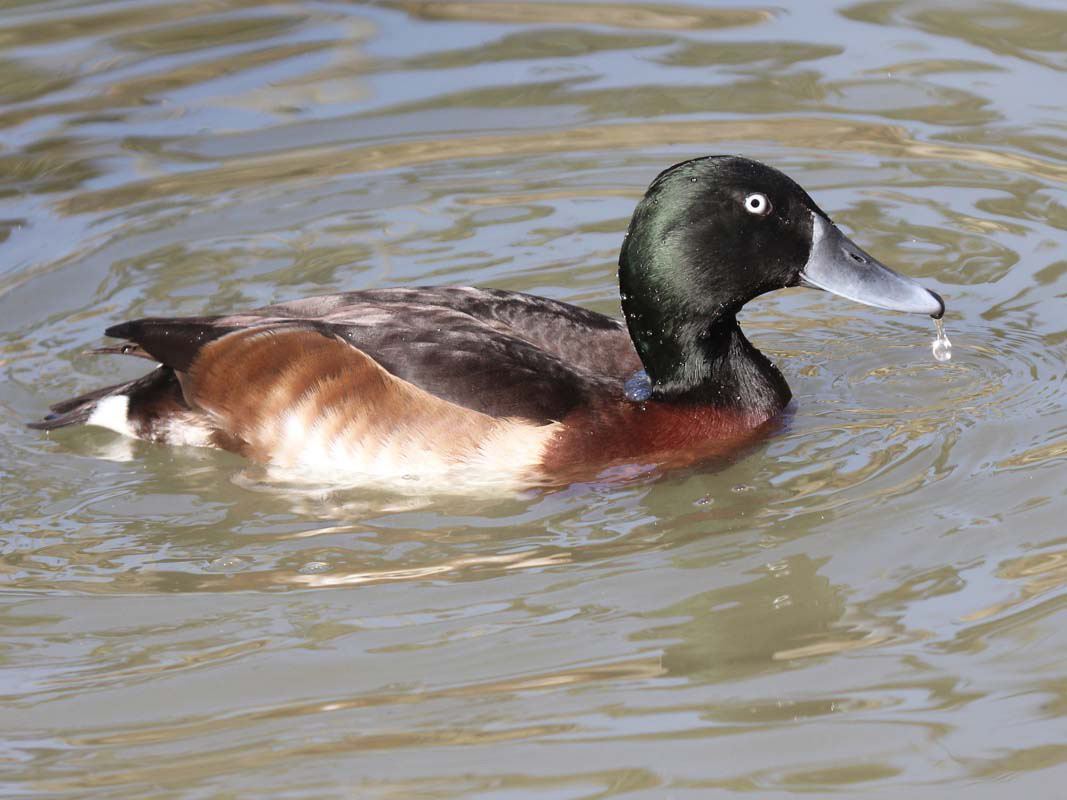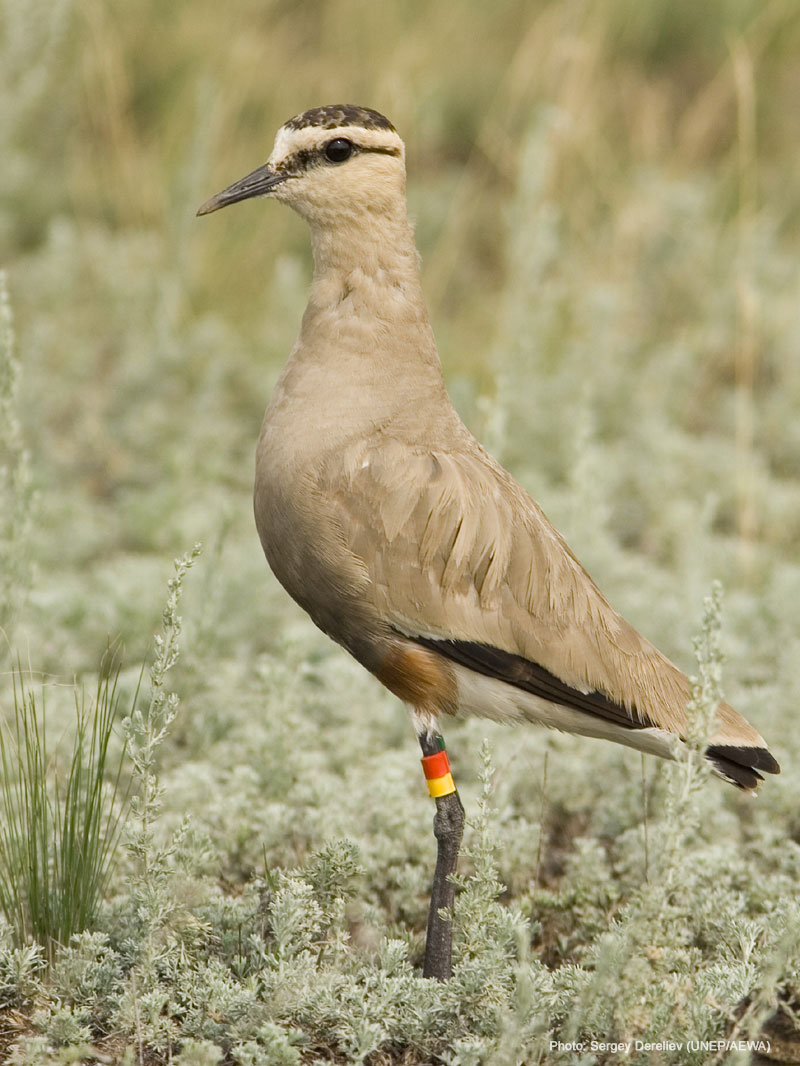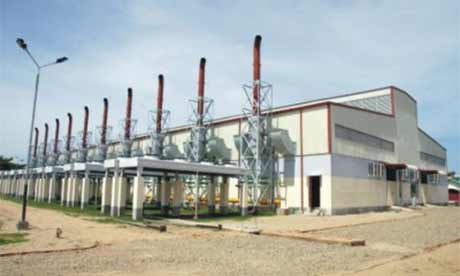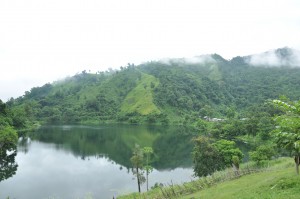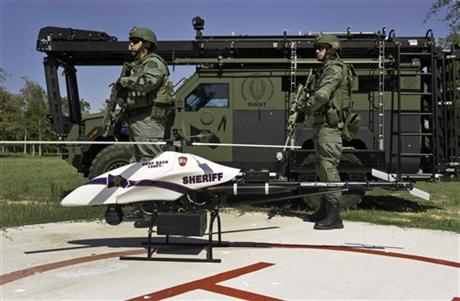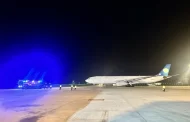The Cabinet Committee (Purchase) of Bangladesh has approved proposal of installation of a 399 megawatt Bibiyana-III gas-field combined cycle power plant under the buyer’s credit.
Marubeni-Hyundai Consortium won the contract of the Bibiyana power plant project to be implemented at a cost of US$ 347.802 million, a deputy secretary of the cabinet division said while briefing the reporters about the decision taken at the meeting.
Marubeni is a Japanese power company while Hyundai Engineering Construction Co. Ltd is a subsidiary of the Korean conglomerate, Hyundai Corporation.
Under the funding arrangement, the winning contractor will arrange the whole cost of the project from the Japanese financing agency — Japan Bank for International Cooperation (JBIC) — and some other financing agencies in Japan on its own.
The project site is located at Moulavibazaar of Sylhet division in Northeastern region of Bangladesh. But Bibiyana site specific ecological data is so far not available to learn the possible environmental impact of the power plant. To meet the data gap, it is important to conduct a rapid ecological assessment to learn about the status of the sites flora, fauna and ecosystems. However, based on the literature review it is revealed that ecologically the project site is located in the haor basin which represents the freshwater ecosystems. Haors are hierologically inter-linked with the upper catchment watershed of Tarap-Patharia Hill ranges covered with semi-evergreen forest. Ecological significance of the basin is as follows:
1. Wetlands of Global Significance are managed as Protected Areas. Such as Hail Haor and Hakaluki Haor as ECA, Tanguar Haor as Ramsar Site, Kawadighi as IBA and Duars of Kushiyara river as Fish and Dolphin sanctuary.
2. Evergreen forest and its biodiversity are managed as Satchari National park, Lowachara National Park and Rema-kalenga Wildlife Sanctuary
3. Floodplains and rivers are rich in Freshwater Fish and Mollusk
4. Wetlands Biodiversity (Swamp forest, reedlands, Turtles, birds, dolphins)
The project location is within the bird migration flyways. Haor basin in general and the PA and IBA s are in particular is important habitat of both resident and migratory water birds. Based on Asian Waterfowl Census (AWC) the numbers of water birds goes up above 2, 00,000 individuals belongs to 200 species of which 12 species is globally threatened. Bangladesh is located at the cross-roads of two international migratory birds flyways. These are Central Asian Flyways and East-Asia Australasian Flyways. The Northeastern haor basin is within the Central Asian Flyways. The flyways of the region are described below.
A flyway is a flight path used in bird migration. Flyways generally span over continents and often oceans.
“The concept of flyway is essentially an operational concept linked to waterfowl whose populations one wishes to manage over their entire migration space”
—Convention on the Conservation of Migratory Species of Wild Animals, United Nations Environment Programme.
The Central Asian Flyway (CAF) has also been referred to as the Central Asian-Indian Flyway and the Central Asian-South Asian Flyway. It covers a large continental area of Eurasia between the Arctic Ocean and the Indian Ocean and the associated island chains. The CAF comprises several important migration routes of waterbirds, most of which extend from the northernmost breeding grounds in Siberia to the southernmost non-breeding wintering grounds in West Asia, South Asia, the Maldives and the British Indian Ocean Territory.
The CAF range is essentially centered on one of the three major wintering areas of waterfowl in the Old World, namely the Indian subcontinent, the other two being Africa, in territory of the African-Eurasian Flyway (AEWA) to the west, and south-east Asia in the East Asian – Australasian Flyway (EAAF) to the east. These wintering areas are geographically separate, and present entirely different ecological, historical and cultural situations. The flyway covers 30 countries of North, Central and South Asia and Trans-Caucasus.[1] The northern catchment area of CAF inevitably overlaps, and considerably overlaps, with both those of AEWA and EAAF, mostly within a single country, the Russian Federation, though sixteen of the 30 countries encompassed by the CAF are located in the AEWA area. They are: Afghanistan, Armenia, Azerbaijan, Bahrain, China People’s Republic of, Georgia, Iran Islamic Republic of, Kazakhstan, Mongolia, Pakistan, Russian Federation, Saudi Arabia, Sri Lanka, Tajikistan, Turkmenistan, United Arab Emirates, United Kingdom Chagos Islands and Uzbekistan. The remaining countries in the Central Asian Flyway are: Bangladesh, Bhutan, India, Iraq, Kuwait, Kyrgyzstan, Maldives, Myanmar, Nepal, Oman, Qatar and Yemen.
The Central Asian Flyway covers at least 279 migratory waterbird populations of 182 species, including 29 globally threatened species and near threatened species that breed, migrate and spend the non-breeding winter period within the region. Species such as the Baer’s Pouchard
critically endangered Northern Bald Ibis, White-bellied Heron and endangered Greater Adjutant, Baer’s Pochard and vulnerable, Black-necked Crane, Indian Skimmer, Lesser Adjutant, Masked Finfoot, Socotra Cormorant, Wood Snipe and near threatened Black-headed Ibis, Lesser Flamingo, Pygmy Cormorant, White-eyed Gull are completely or largely restricted to the Central Asian Flyway range.
Sociable Lapwing. In addition, the breeding range of some species including the critically endangered Siberian Crane, Slender-billed Curlew, Sociable Lapwing, Spoon-billed Sandpiper and endangered Red-breasted Goose, Nordmann’s Greenshank, White-headed Duck and vulnerable Spot-billed Pelican, Dalmatian Pelican, Lesser White-fronted Goose, Marbled Duck, Relict Gull, and near threatened Black-winged Pratincole, Ferruginous Duck, Corn Crake and Asian Dowitcher are largely restricted to the region although the non-breeding ranges overlap with adjoining flyways.
The East Asian – Australasian Flyway is one of the world’s great flyways. At its northernmost it stretches eastwards from the Taimyr Peninsula in Russia to Alaska. Its southern end encompasses Australia and New Zealand. Between these extremes the Flyway covers much of eastern Asia, including China, Japan, Korea, South-East Asia and the western Pacific. It is especially important for the millions of migratory waders or shorebirds that breed in northern Asia and Alaska and spend the non-breeding season in South-East Asia and Australasia. In total, the flyway passes through 22 countries with approximately 55 migratory species travelling along it, equating to about 5 million birds.
The wetlands of Bangladesh are being degraded rapidly due to population pressure, withdrawal of water for irrigation, destruction of swamp forest and many other anthropogenic and natural causes. Large scale habitat conversion, unsustainable harvesting policies and lack of ecological considerations have led to the destruction of valuable wetland habitat for water birds and other associated biodiversity. Immediate action is require/d for restoring these habitats and conserving the water birds in Bangladesh.
The Surma-Kushiara floodplain comprises of river draining from the North-Eastern borders towards the Sylhet basin. The relief is generally smooth, comprising broad ridges and basins, but it is locally irregular alongside river channels. The zone is abounded with diverse wetlands, small and medium beels and channels, secondary rivers and huge seasonally inundated lands where locals do fishing in wet season and cultivate rice in dry season. Patches of degraded swamp forest still exist as remnant of its historic extent. Floral composition is interesting with numerous hydrophytes. The extensive network of the wetlands in this zone, especially in the winter, is inhabited by migratory waterfowl as numerous water birds, ducks, egrets and herons come to visit for wintering and breeding. The total area of the Surma-Kushiara floodplain within the haor area is 3883sqkm, The wetlands of Bangladesh are home to about 70 species of resident waterbirds including ducks, grebe, cormorants, bitterns, herons, egrets, storks, rails, jacanas, finfoot, waders, gulls, turns and skimmers. Eleven species of resident waterbirds are identified as threatened. The important threatened species are Masked Finfoot, Indian Skimmer, Black-headed Ibis, Greater Adjutant, Lesser Adjutant, Baikal Teal, Baer’s Pochard, Ferruginous Pochard, Wood snipe, Norman’s Green shank and Spoon-billed Sandpiper. The Key breeding and staging areas of Bangladesh are: Haor areas such as the Meghna estuary, KawaDighi Haor,Tanguar haor and Hail-Hakaluki haors, Chalan Beel, the Sundarbans and other coastal mangroves including Hatia and Nijhum Dweep, haor areas of the north west and off shore Islands.
Millions of birds killed worldwide by man-made barriers each year
World Migratory Bird Day (WMBD) 2009 events draw attention to the many man-made obstacles birds face during their migration.
The central theme was – “BARRIERS TO MIGRATION” – aims to highlight the effects man-made structures such as wind turbines, communication masts, tall buildings and windows, power lines and fences have on migratory birds. During migration birds face a number of natural obstacles such as expanding deserts, seas, huge mountains and other natural barriers. Yet, next to these natural barriers, birds are increasingly being confronted with manmade barriers on their journeys.
These man-made structures can not only disturb the migratory movements of birds, but it is estimated that birdstrike due to collisions with man-made structures is responsible for the deaths of many millions of birds worldwide each year. Among the affected bird species are abundant as well as rare and endangered species. Man-made barriers are believed to be a growing threat and are likely to be a significant contributor to the decline in many populations, especially those of scarcer, more vulnerable bird species.
“Hundreds and thousands of migratory birds, including many that are protected under international wildlife treaties such as the African-Eurasian Migratory Waterbird Agreement (AEWA), are killed in growing numbers by man-made barriers. Some of these cases could quite easily be avoided by introducing technical measures for reducing this often avoidable cause of destruction” said Bert Lenten, Executive Secretary of AEWA and initiator of the World Migratory Bird Day campaign. However, each year the number of wind turbines, power lines, skyscraping radio, TV and cell phone transmission masts, reflecting plate glass windows, tall buildings and other structures continues to grow, often without consideration of avoidance and mitigation measures known to reduce avian mortality through collisions with these structures.
In addition to a number of known mitigation measures specific to each type of structure, particularly the location and placement of structures such as wind farms and power lines along major migratory routes or near areas regularly used by large numbers of feeding, breeding or roosting birds, can dramatically affect the likelihood of collisions. Placement of structures along important wetlands, river valleys and in coastal areas where large numbers of migratory birds congregate, are also likely to increase the risk to migratory birds.
“Although man-made barriers represent an increasing problem for migratory birds worldwide, so far little attention has been given to possible solutions. My strong hope is that World Migratory Bird Day will help raise awareness of these barriers and that action will be taken to reduce the impact of some of these man-made structures on migratory birds” said Bert Lenten.
www.worldmigratorybirdday.org
World Migratory Bird Day (WMBD)
World Migratory Bird Day (WMBD) is a global initiative devoted to celebrating migratory birds and for promoting their conservation worldwide. This year WMBD will take place on the weekend of 9-10 May and its central theme will be ‘Barriers to migration.’
World Migratory Bird Day is being organized by the African-Eurasian Migratory Waterbird Agreement (AEWA) and the Convention on Migratory Species (CMS) – two international wildlife treaties administered by the United Nations Environment Programme (UNEP) and other partners.
People and dedicated organizations around the world will be using the event to draw attention to man-made barriers and their impact on migratory birds. Over one hundred separate events in 44 countries have already been registered on the WMBD website so far (see: www.worldmigratorybirdday.org). Activities to mark WMBD include bird festivals and bird watching trips, public discussions, exhibitions, presentations, bird rallies and other educational and public events.
Barriers to migration
Windows and tall buildings
Windows of all sizes and types, even small and narrow windows, from those found on tall buildings to those used in residential houses are very dangerous for birds. Ornithologists usually call them “invisible killers” due to the large number of deaths and injuries they cause regardless of species, age, sex and the conditions in which collisions occur. Attracted by the reflection of trees or plants located near the windows, birds try to pass through them, sometimes, at top speed. This can lead to fatal or other injuries or simply exhaustion as they attempt to overcome the invisible barrier and end up falling to the ground and thus becoming easy prey. Predators such as cats often lie in wait for their victims to quickly remove them. Moreover, some studies show that about half of those birds, which manage to fly away, die later due to injuries received. These facts are often unknown to those observing bird strikes, as they tend to think collisions do not actually harm birds and that they are able to fly away without any lasting damage.
Wind turbines
Although wind turbines are a form of clean technology for renewable energy production and therefore an
important tool in combating climate change, they also represent a danger to migratory birds. Wind turbines, especially when standing isolated in large-scale wind farm developments, also represent a severe potential hazard for migratory birds. Their blades rotate at speeds of up to 200 kilometres per hour and, when placed along the major migratory routes of birds, wind turbines can become extremely dangerous obstacles causing both injuries and fatalities to many species of migratory birds. In addition to causing collisions, wind turbines are also known to cause displacement of migratory birds and are considered especially detrimental in areas where there is a known high concentration of migratory birds, for example at major stop-over and feeding sites. Like other obstacles that are surrounded with lights for air traffic safety, wind turbines equipped with bright lights can also attract disorientated birds and lead to fatal injuries during the night.
Wind farms are often built along coastlines and mountaintops, usually in areas that have high wind potential, and which often lie along the flight paths of many migratory birds. Unfortunately, wind farms are still being built along coastlines, mountain ridges and wetlands, sometimes without any prior assessment of their potential environmental impact on migratory birds and in places where there is a known high concentration of many migratory bird species. It is especially a cause for concern when wind farms are constructed in areas that are frequently used by endangered and rare bird species.
Power lines
Power lines and fences are believed to pose a particular risk to migratory birds. Overhead power lines stretch for millions of kilometres globally and the resulting carpet of surface cables continues to increase. Apart from the risk of electrocution faced by birds, which results from poorly designed power poles, the cables themselves constitute objects for potential collisions. Fast-flying birds, so-called poor fliers due to their small wings, and birds lacking in agility are especially at risk; they tend to hit conductors and ground wires, frequently at night and in poor weather conditions.
Communication towers and masts are commonly high structures located on elevated points of land and their supporting guy wires are extremely dangerous for migratory birds. Fast flying birds simply do not notice loose wires and birds that are not very agile have difficulties avoiding them. Stormy nights and bad visibility make supporting wires even more dangerous for birds and dramatically increase the risk of collision. Brightly lit towers in the similar adverse conditions make bird-strikes even more likely. Birds, especially nocturnal birds travelling in weather conditions like fog or mist, loose their navigation cues and get disoriented or dazzled by the lights of towers. Mistaking them for constellations, birds tend to circle around the lights and rarely escape fatal hits against the wires and other supporting elements. Even if they manage to avoid heavy strikes, birds are often badly injured or they waste energy they need to accomplish their migration journey.
Burdening factors
When wind turbines, power lines and other man-made structures are placed in areas where the density of birds is high or along major migratory paths, the probability of collisions significantly increases. In particular, the placement of windfarms and other structures along landscape features such as river valleys and coastal areas, used by migratory birds as navigation cues, is believed to significantly increase collisions. Collision risks are also increased or diminished by the intensity and use of lighting and size – the more lighting in place and the taller the structure is, the more dangerous the objects are for birds. Bad weather and darkness, as well as the physical characteristics of birds (acuteness of vision) or flight behaviour (flocks), also influence the collision brate.
Based on the above given ecological scenario, there is a dire need to carry out a comprehensive environmental impact assessment prior to installation Bibyana Power plant in the Ecologically critical area in the Northeastern Bangladesh.
Authors: Dr. Anisuzzaman Khan, Syed Rajowan / e-News® Xclusive







